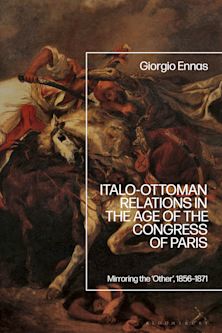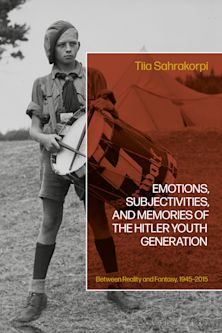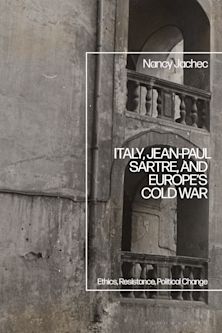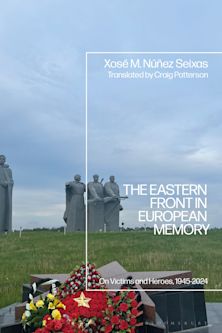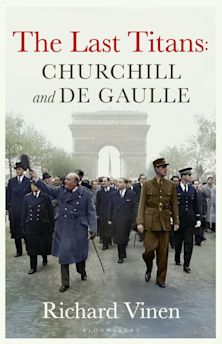- Home
- ACADEMIC
- History
- European History
- A Nazi Camp Near Danzig
A Nazi Camp Near Danzig
Perspectives on Shame and on the Holocaust from Stutthof
A Nazi Camp Near Danzig
Perspectives on Shame and on the Holocaust from Stutthof
You must sign in to add this item to your wishlist. Please sign in or create an account
Description
Within the vast network of Nazi camps, Stutthof may be the least known beyond Poland. This book is the first scholarly publication in English to break the silence of Stutthof, where 120,000 people were interned and at least 65,000 perished. A Nazi Camp Near Danzig offers an overview of Stutthof's history. It also explores Danzig's significance in promoting the cult of German nationalism which led to Stutthof's establishment and which shaped its subsequent development in 1942 into a Concentration Camp, with the full resources of the Nazi Reich.
The book shows how Danzig/Gdansk, generally identified as the city where the Second World War started, became under Albert Forster, Hitler's hand-picked Gauleiter, 'the vanguard of Germandom in the east' and with its disputed history, the poster city for the Third Reich. It reflects on the fact that Danzig was close enough to supply Stutthof with both prisoners – initially local Poles and Jews – as well as local men for its SS workforce. Throughout the study, Ruth Schwertfeger draws on the stories of Danziger and Nobel Prize winner, Günter Grass to consider the darker realities of German nationalism that even Grass's vibrant depictions and wit cannot mask. Schwertfeger demonstrates how German nationalism became more lethal for all prisoners, especially after the summer of 1944 when thousands of Jewish woman died in the Stutthof camp system or perished in the 'death marches' after January 1945. Schwertfeger uses archival and literary sources, as well as memoirs, to allow the voices of the victims to speak. Their testimonies are juxtaposed with the justifications of perpetrators. The book successfully argues that, in the end, Stutthof was no less lethal than other camps of the Third Reich, even if it was, and remains, less well-known.
Table of Contents
1. Promoting German-Consciousness in a Revamped Gau, 1930-1939
2. Danzig-West Prussia and Stutthof: Implementing Germandom, September 1939 – January 1942
3. Gaining the Next Tier of Germandom as a Nazi Konzentrationslager
4. Entering the Zone of the Final Solution, Summer of 1944
5. The Collapse of Germandom, Winter of 1945
Epilogue
Sources
Abbreviations and Key Terms
Bibliography
Appendices
Index
Product details

| Published | 24 Feb 2022 |
|---|---|
| Format | Ebook (PDF) |
| Edition | 1st |
| Extent | 272 |
| ISBN | 9781350274051 |
| Imprint | Bloomsbury Academic |
| Illustrations | 18 bw illus |
| Publisher | Bloomsbury Publishing |
About the contributors
Reviews
-
By juxtaposing German with Yiddish and Hebrew, the book addresses timely and relevant themes, such as linguistic purity, the power dynamics between “minor” and “major” languages, and the role of a lingua franca in shaping cultural and political identities.
Journal of Modern Jewish Studies
-
An imaginative close reading of Günter Grass's Danzig trilogy with its hints of nearby “Stutthof” leads into and frames a fully researched historical account of the creation and changing functions of that concentration camp in the context of Nazi policies before and during World War II. From the role of local SS men and the camp's changing organizational structure to harrowing details from published memoirs and oral histories by witnesses, perpetrators and survivors, Ruth Schwertfeger's book offers a full view of the unimaginable level of truly hellish terror and violence unleashed in just one small site of the “Bloodlands.” This must have been a very hard book to research and write for an author whose humane voice shines through in A Nazi Camp Near Danzig.
Werner Sollors, Henry B. and Anne M. Cabot Professor of English, Emeritus, Harvard University, USA
-
Outstanding study on the Danzing/Gdansk as city and Stutthof/Sztutowo as a concentration camp near by it. The book of Professor Ruth Schwertfeger put in the light of day names, experiences and feelings of inhabitants of the concentration camp's micro-socium. This much needed and thought-provoking book discusses values of a human being in the circumstances of dehumanization and connect History, Literature and contemporary specific understanding of such places as Stutthof.
Prof. Dr. Jurgita Šiauciunaite-Verbickiene, Faculty of History, Vilnius University, Lithuania
-
[A Nazi Camp near Danzig] insightfully exemplifies the consequences that occurred when economic and political turmoil clashed with the weaponization of instability through propaganda.
Journal of East Central European Studies

ONLINE RESOURCES
Bloomsbury Collections
This book is available on Bloomsbury Collections where your library has access.
















